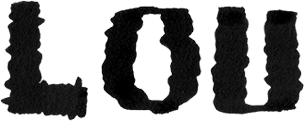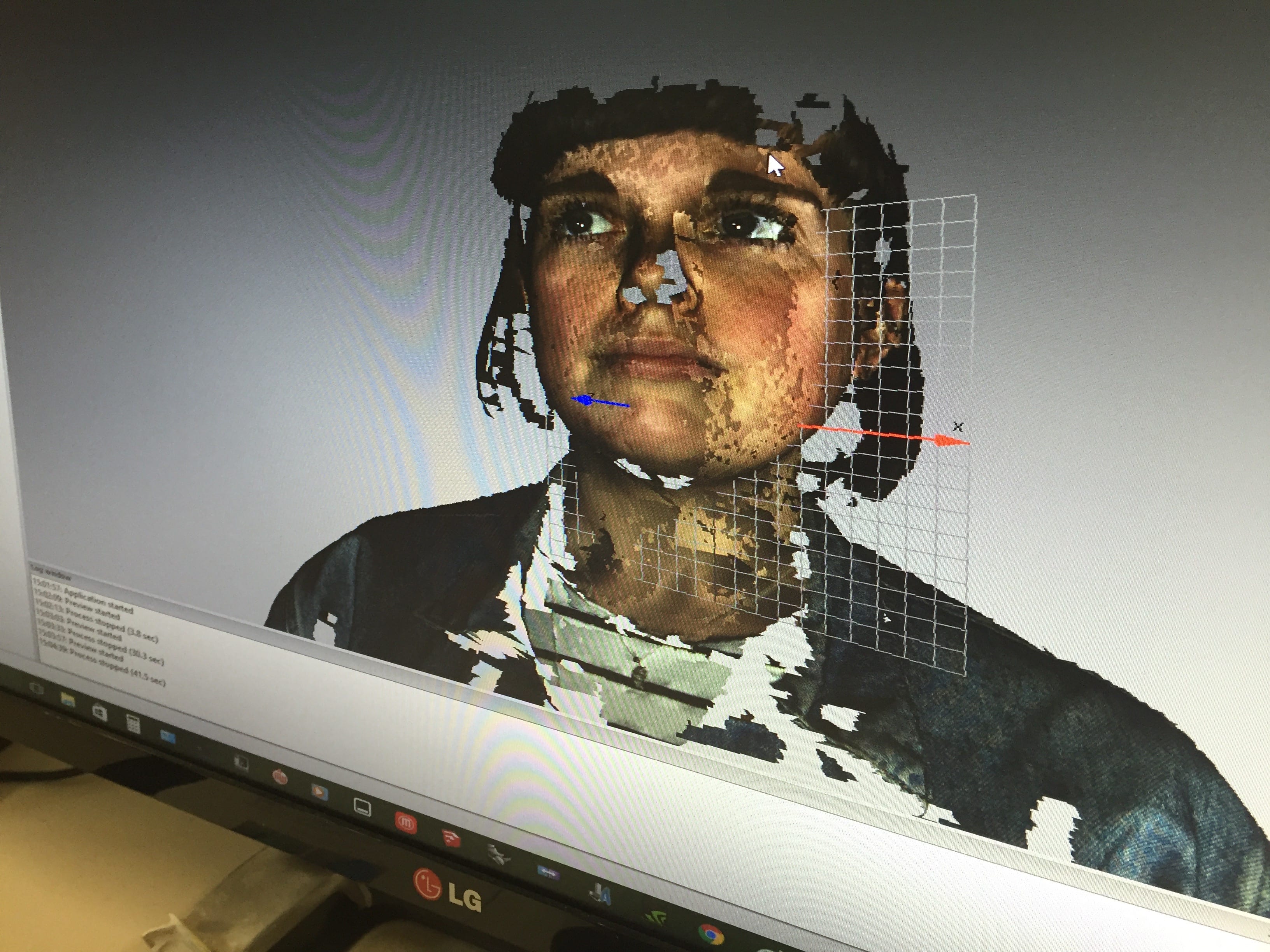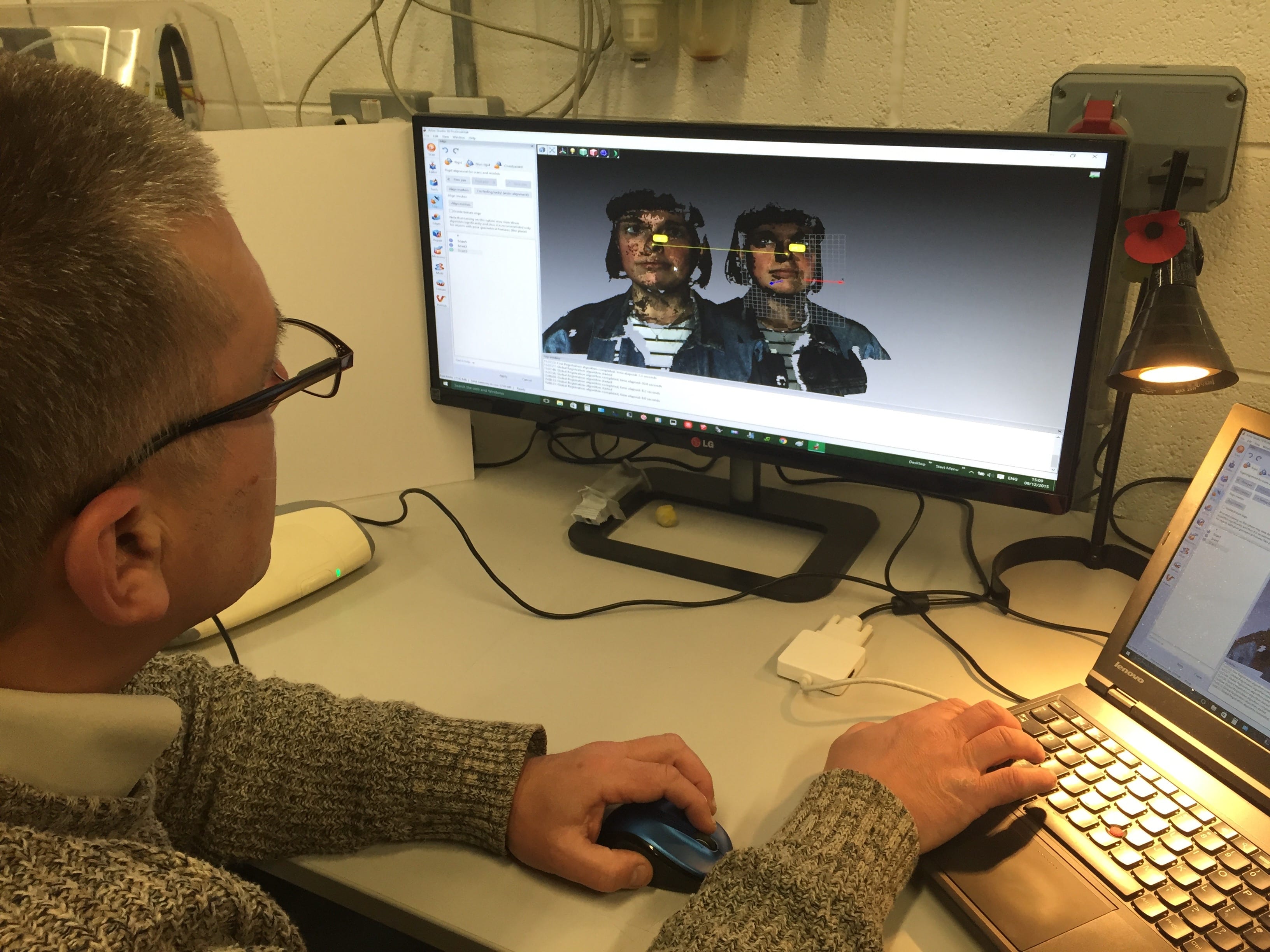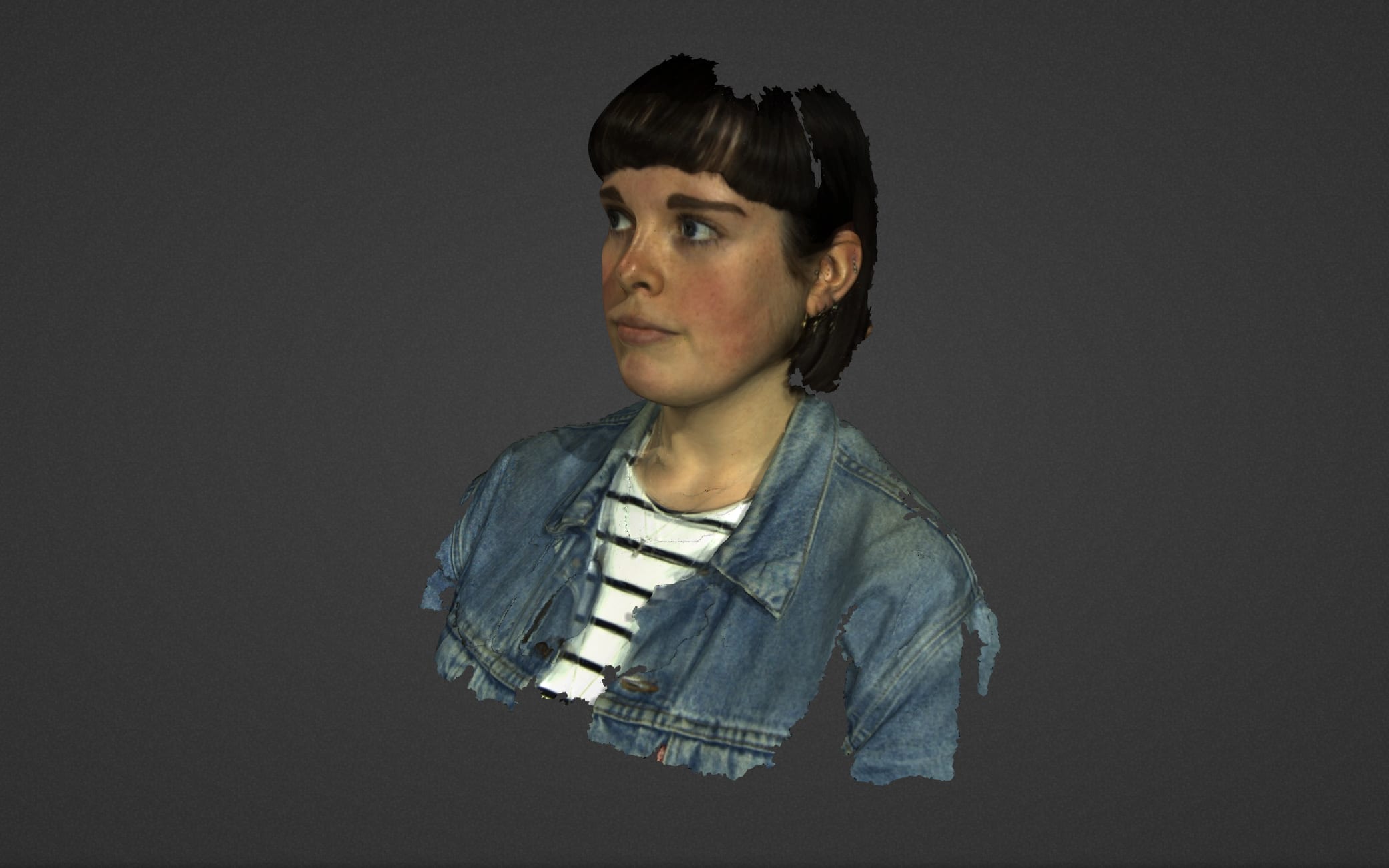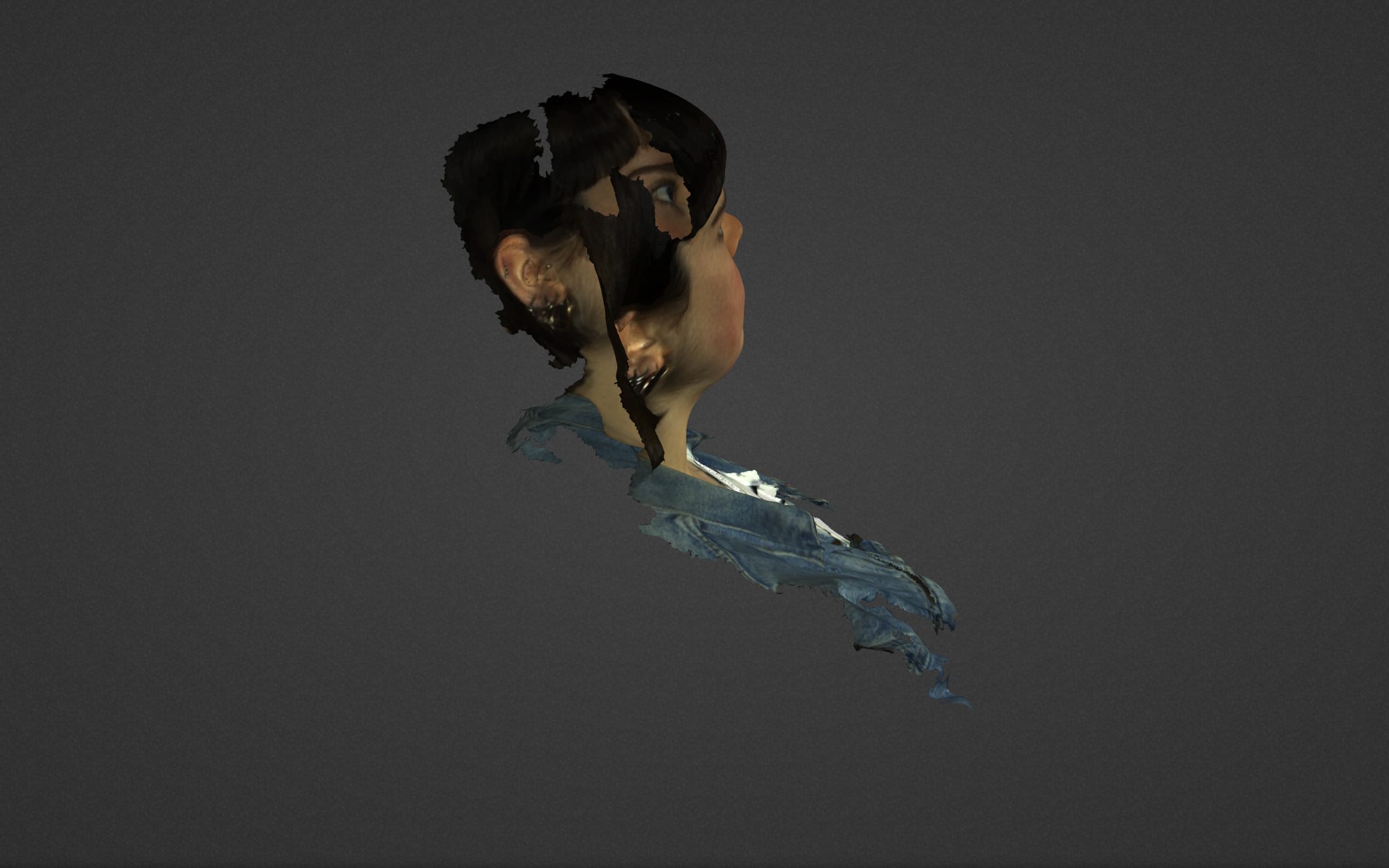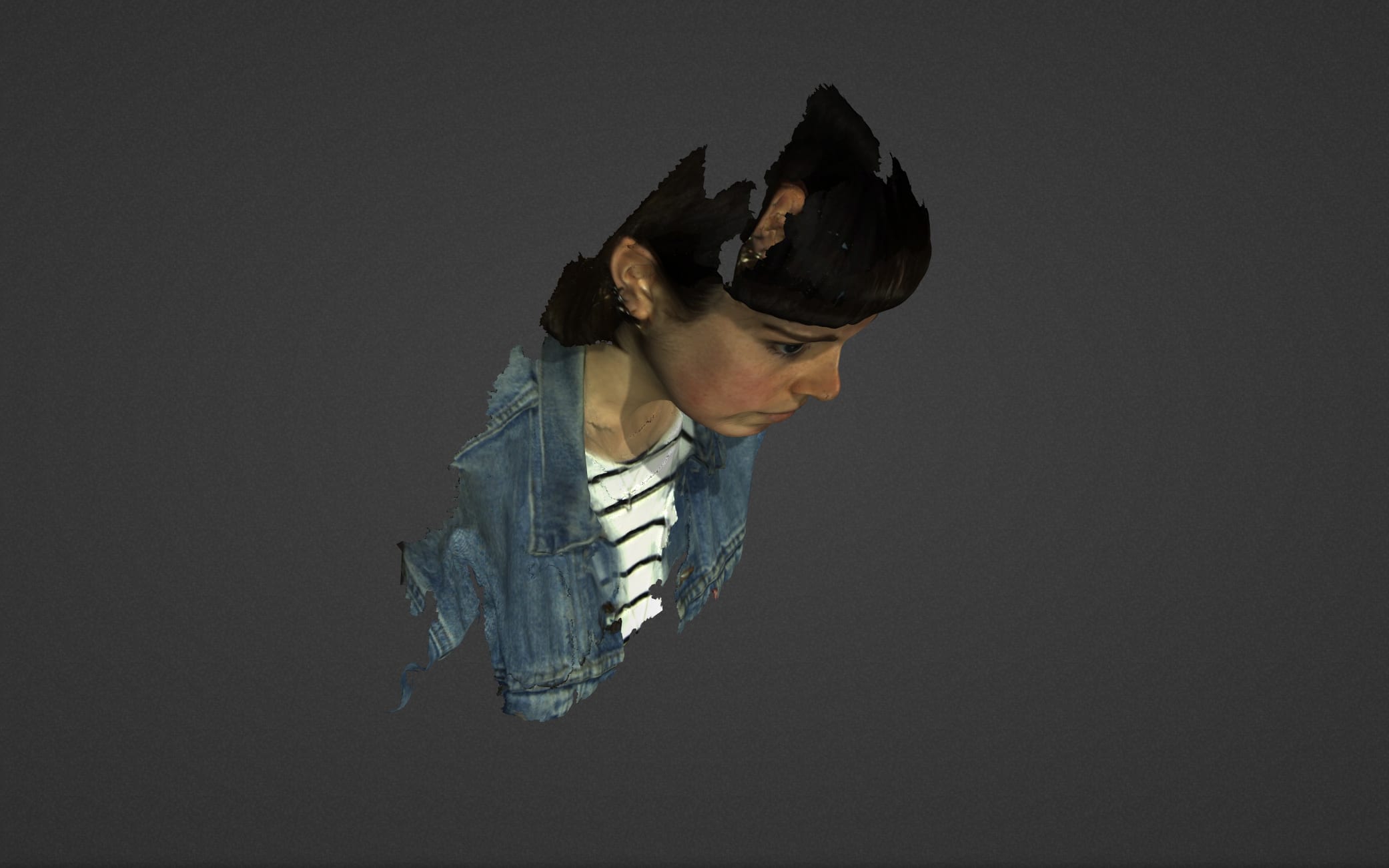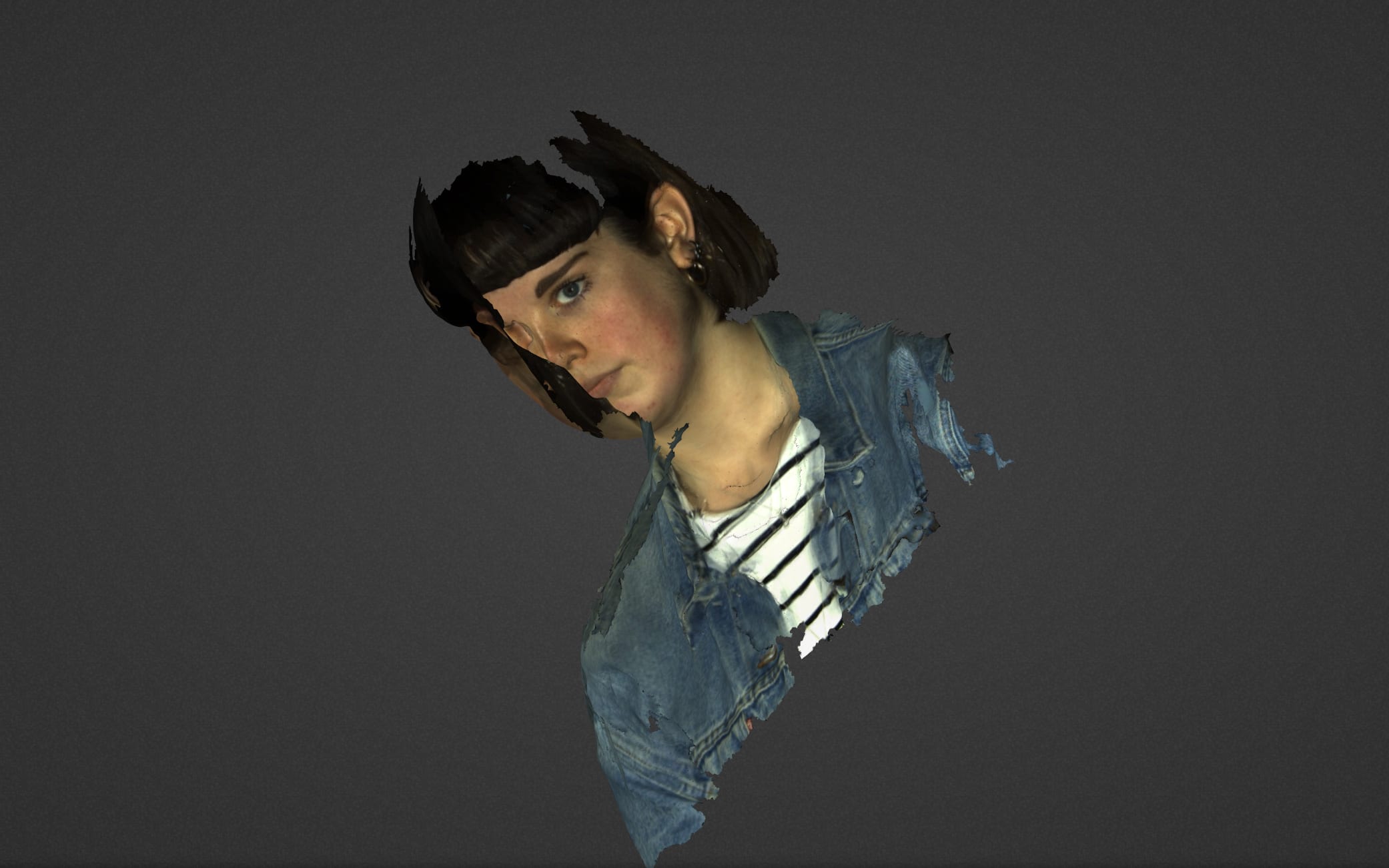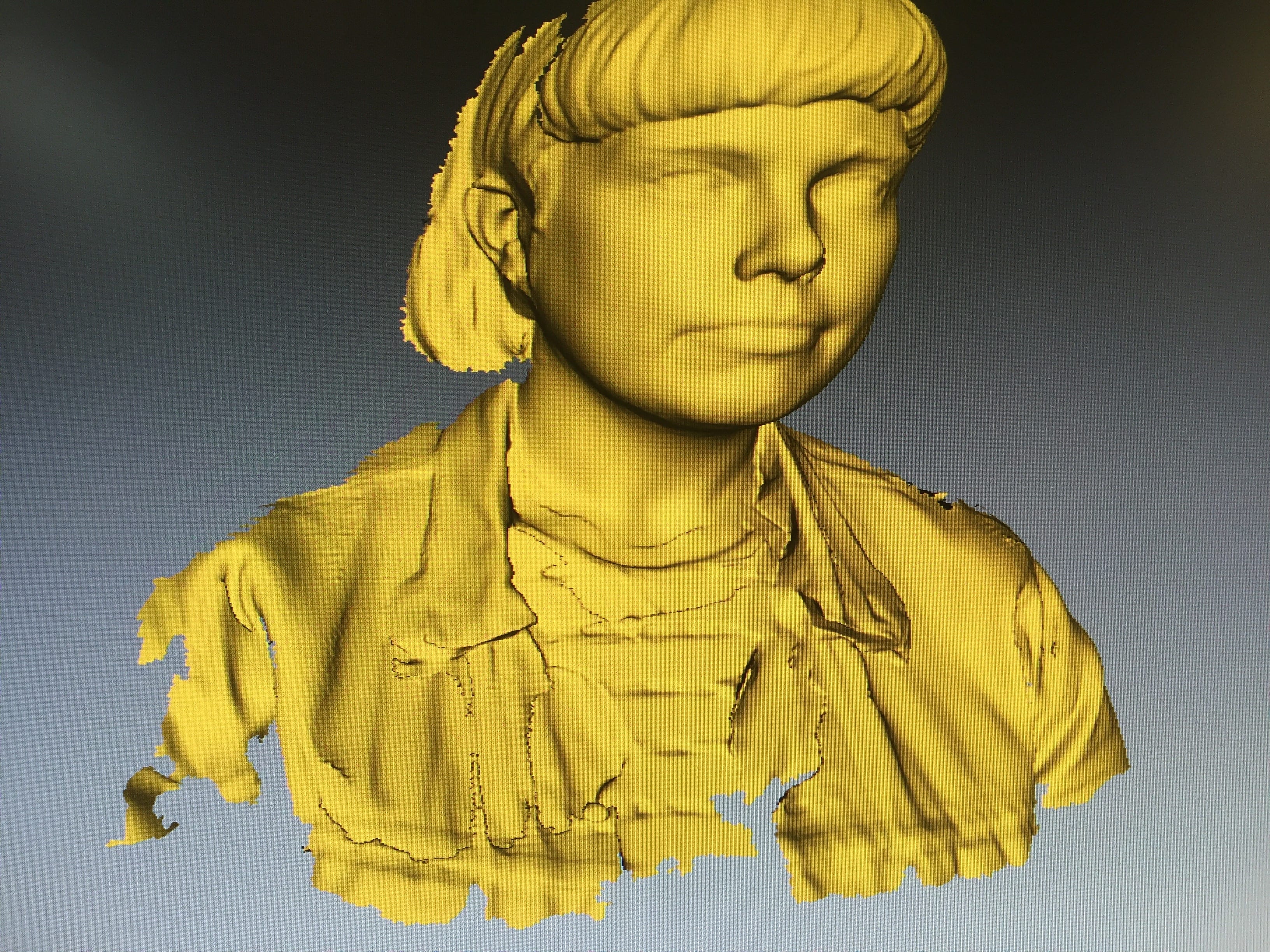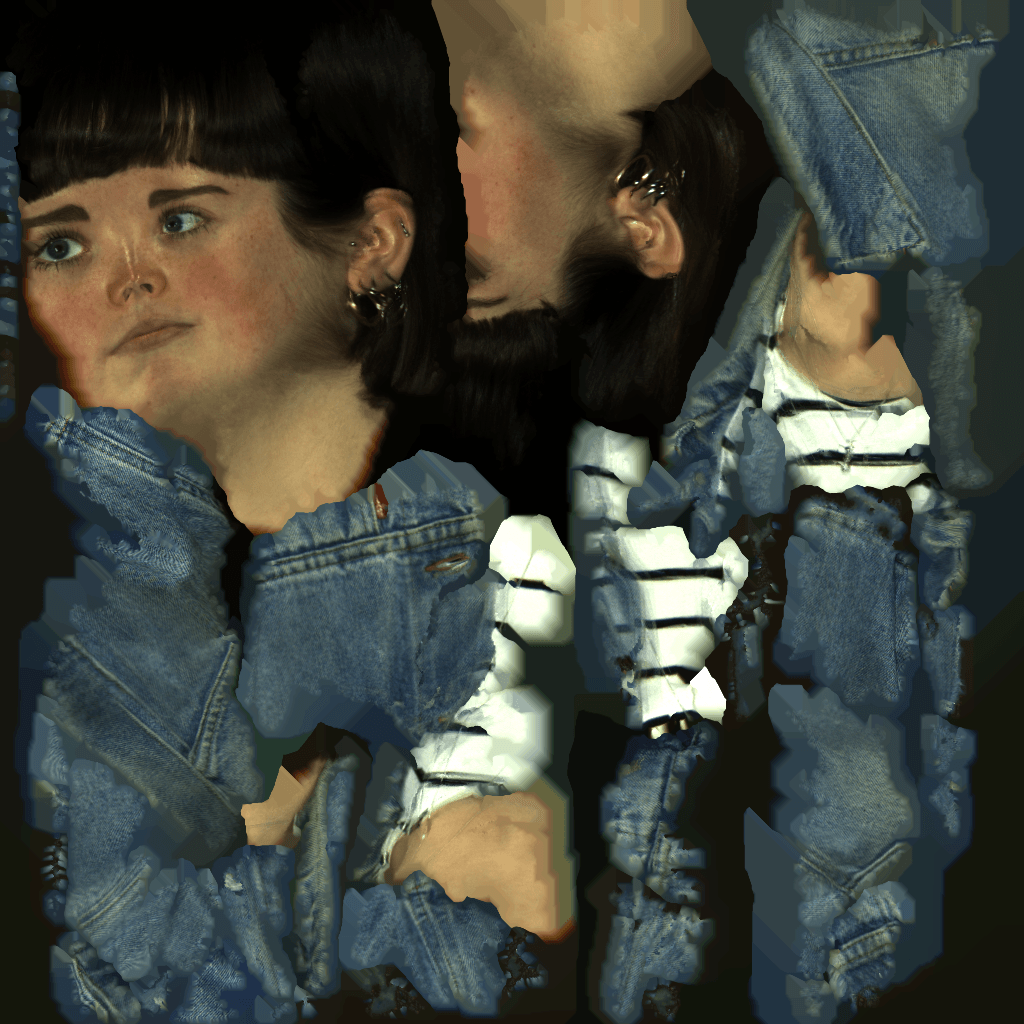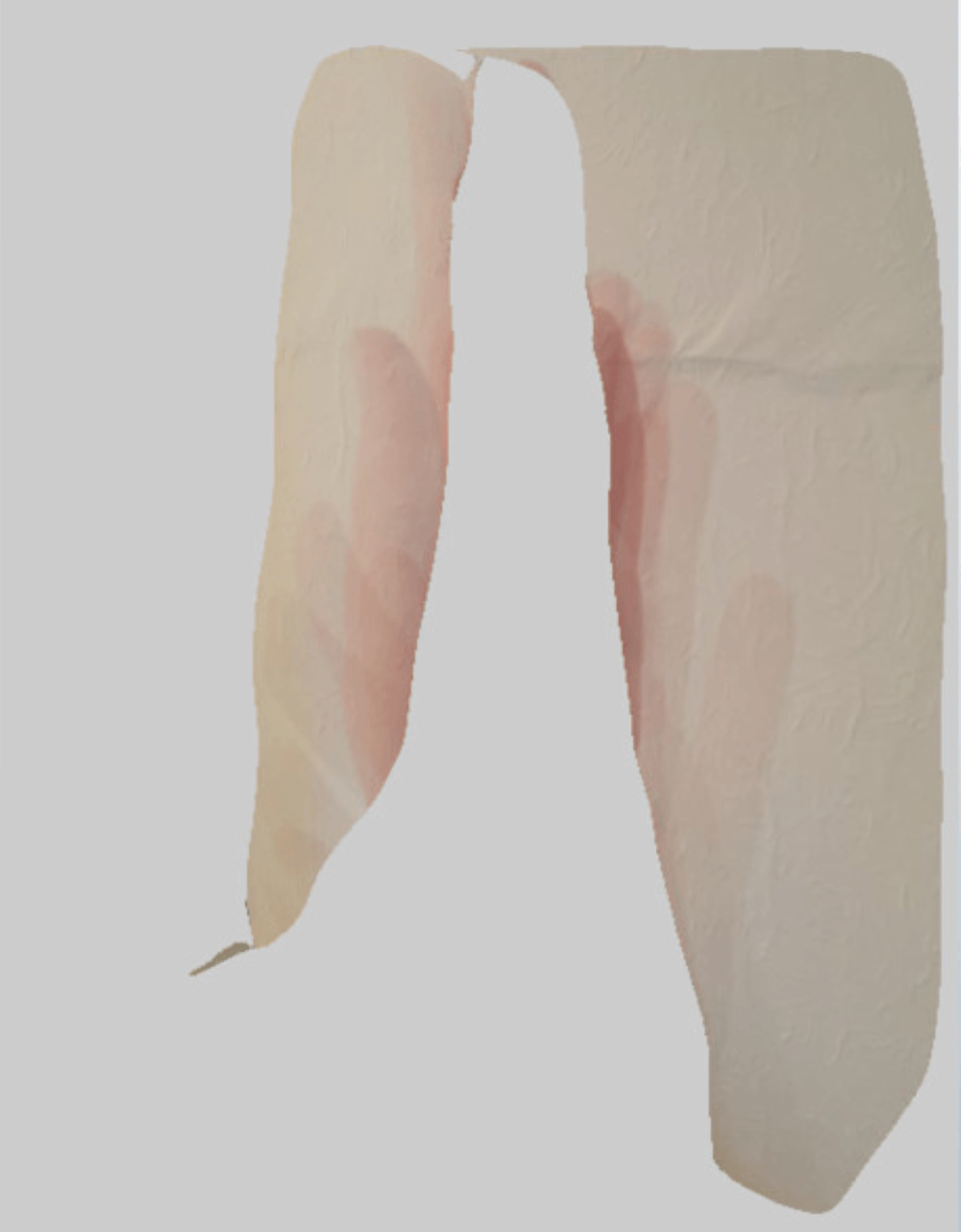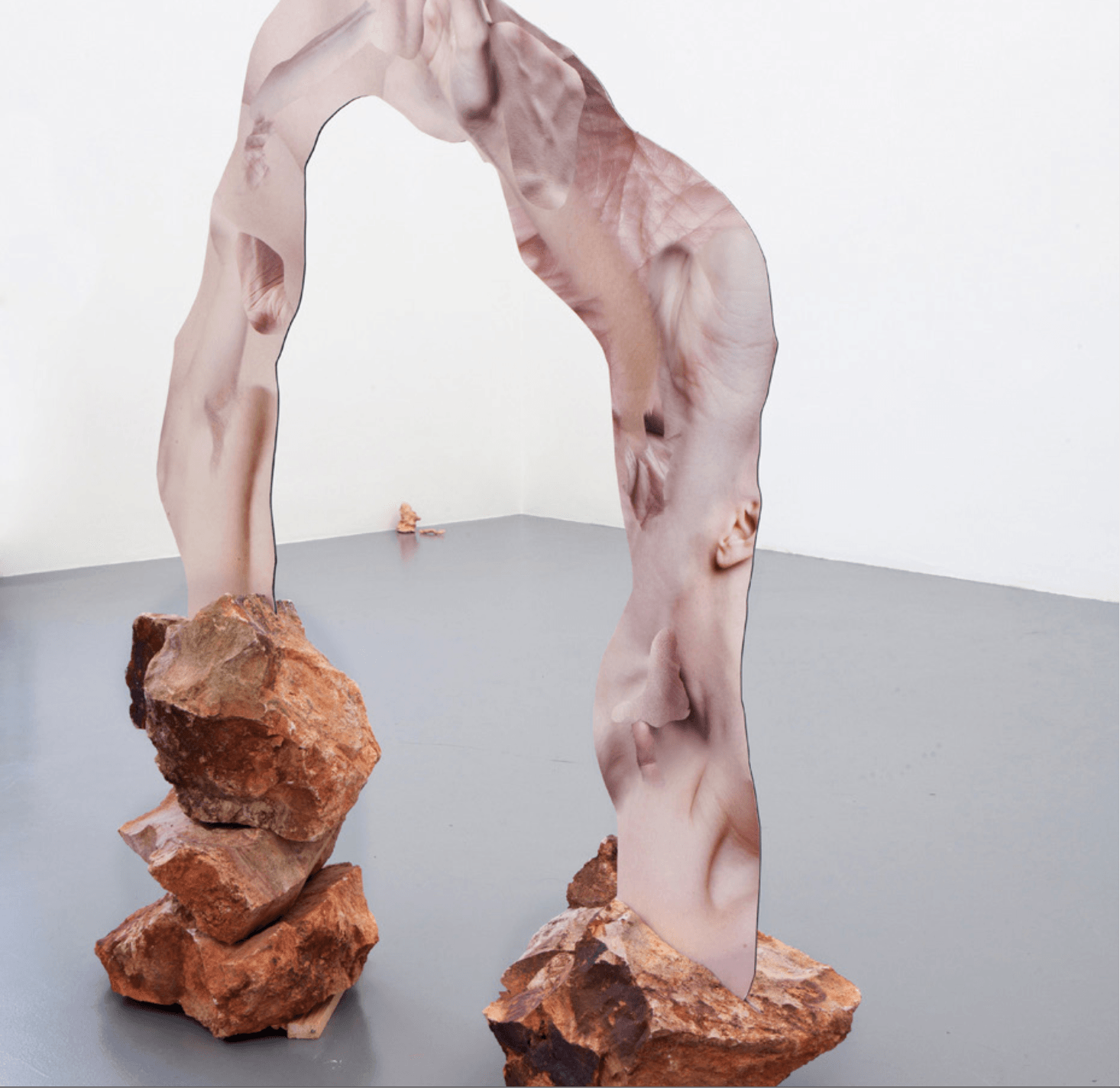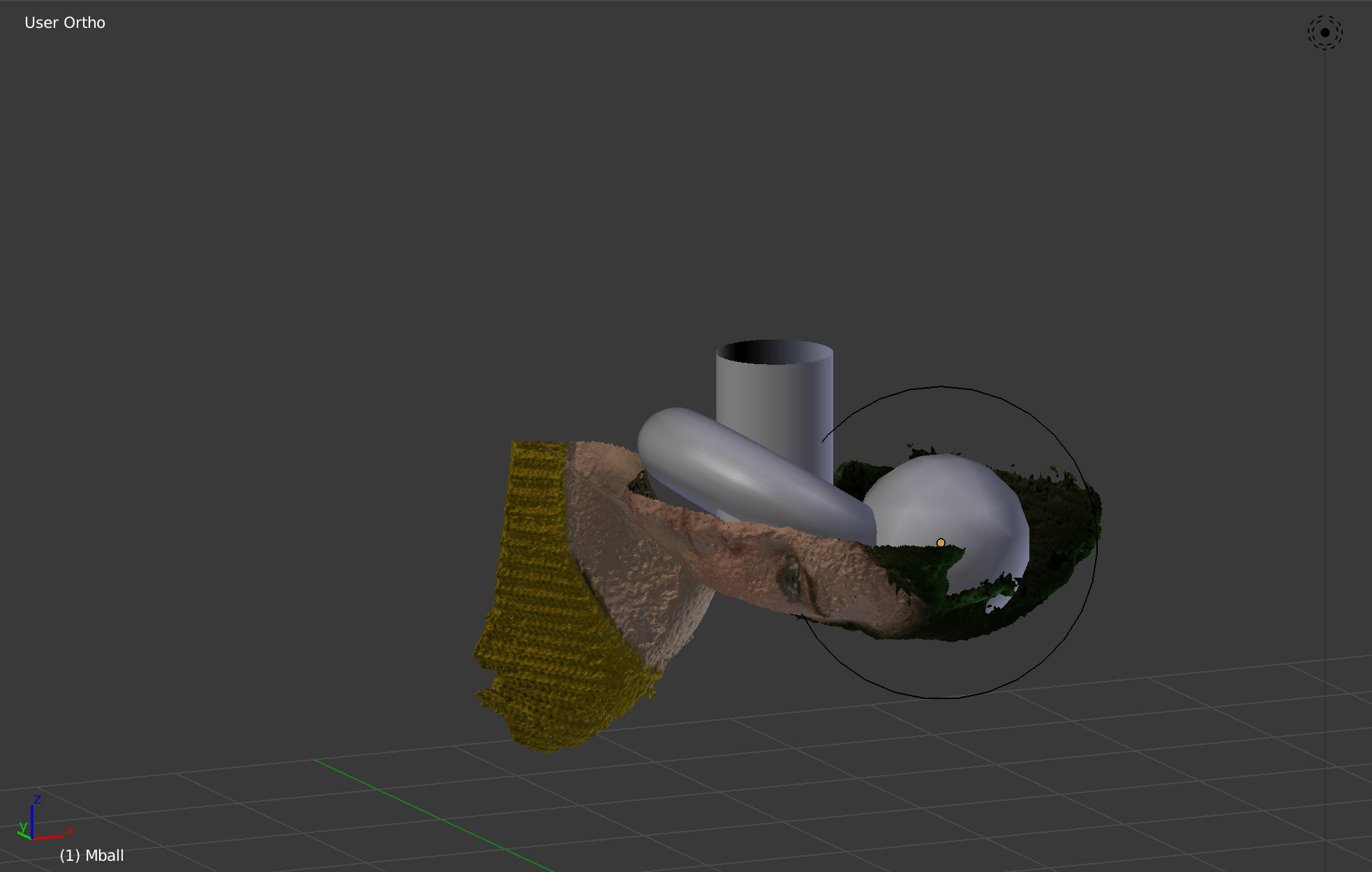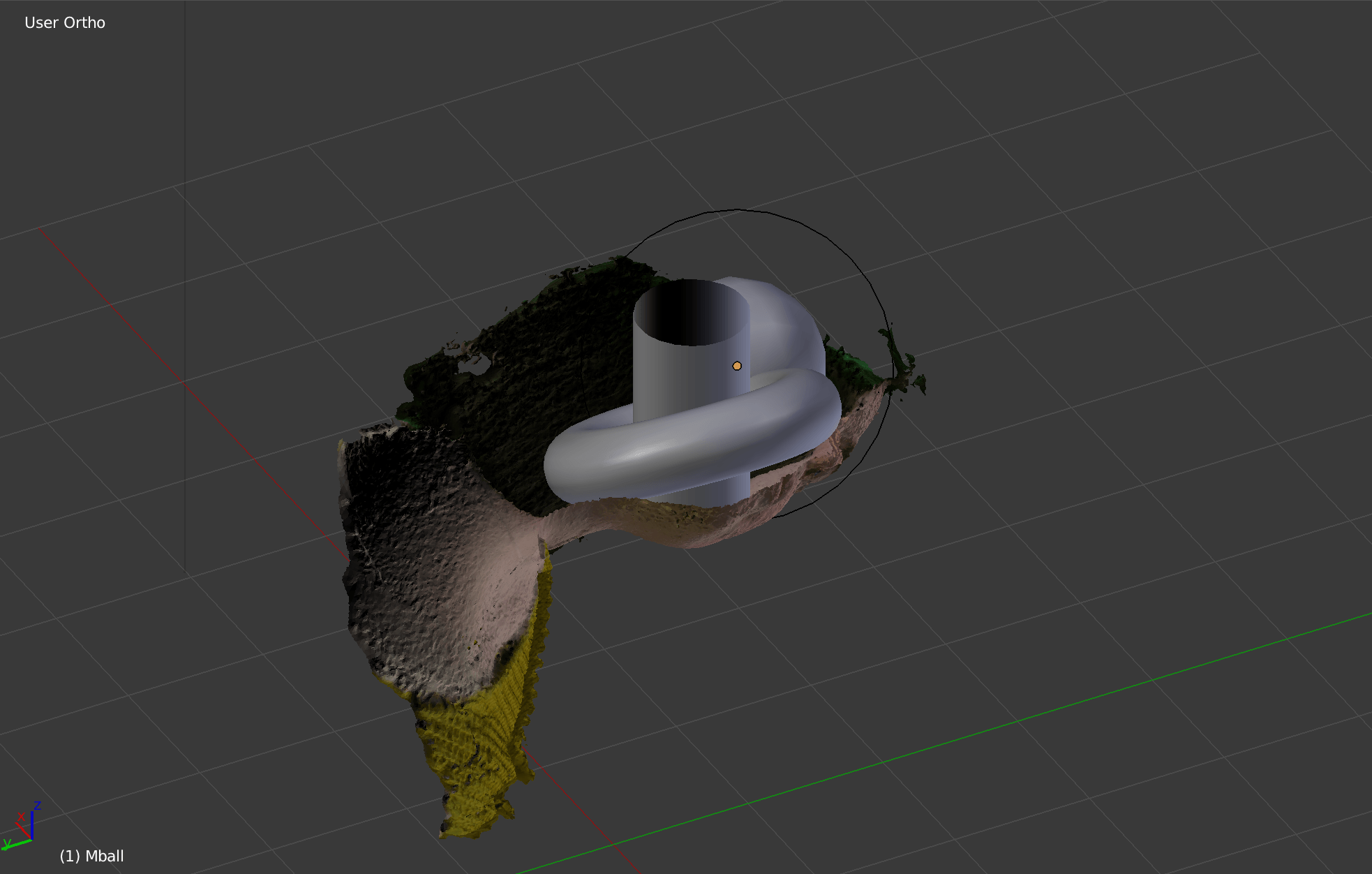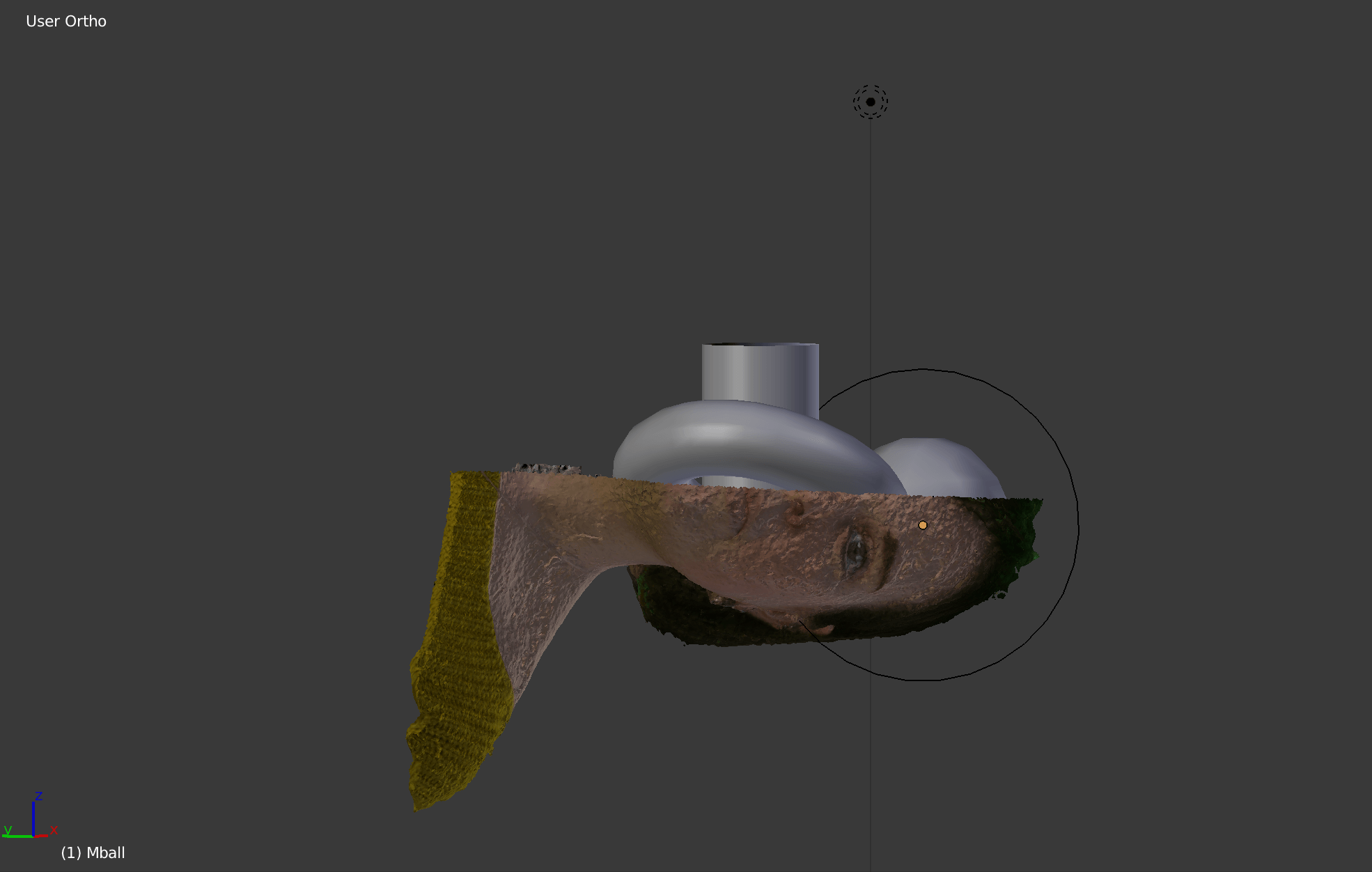The third 3D print was produced from the model created using Agisoft Photoscan, this is weirdest of the three models and due to the amount of faces in the original mesh it created much more support material. This support material effectively obscures one side of the head, where the features are lost behind it. The overall texture is very interesting, creating a tactile object that people want to touch and handle.
The sense of otherness is very apparent here and creates a break from the other two models closer resemblance to the human. This can perhaps be seen as a more complete transformation to the object, or it can be the representation of the void between subject and object. An in-between state that is difficult to comprehend with from a human perspective. not quite one and not quite the other. Suspended in one part of the multiverse.





